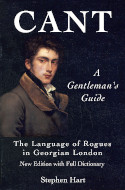THE NAG'S HEAD TAVERN CHEAPSIDE
As you pass through Cheapside, you may observe upon the front of the old house, No. 39, the sign-stone of a "Nag's Head:" this is presumed to have been the sign of the Nag's Head Tavern, which is described as at the Cheapside corner of Friday-street. This house obtained some notoriety from its having been the pretended scene of the consecration of Matthew Parker, Archbishop of Canterbury, in the reign of Queen Elizabeth, at that critical period when the English Protestant or Reformed Church was in its infancy. Pennant thus relates the scandalous story. "It was pretended by the adversaries of our religion, that a certain number of ecclesiastics, in their hurry to take possession of the vacant see, assembled here, where they were to undergo the ceremony from Anthony Kitchen, alias Dunstan, bishop of Landaff, a sort of occasional conformist who had taken the oaths of supremacy to Elizabeth. Bonner, Bishop of London, (then confined in the Tower,) hearing of it, sent his chaplain to Kitchen, threatening him with excommunication, in case he proceeded. The prelate therefore refused to perform the ceremony: on which, say the Roman Catholics, Parker and the other candidates, rather than defer possession of their dioceses, determined to consecrate one another; which, says the story, they did without any sort of scruple, and Scorey began with Parker, who instantly rose Archbishop of Canterbury. The refutation of this tale may be read in Strype's Life of Archbishop Parker, at p. 57. A view of the Nag's Head Tavern and its sign, is preserved in La Serre's prints, Entrée de la Reyne Mère du Roy, 1638, and is copied in Wilkinson's Londina Illustrata.
The Roman Catholics laid the scene in the tavern: the real consecration took place in the adjoining church of St. Mary-le-Bow. As the form then adopted has been the subject of much controversy, the following note, from a letter of Dr. Pusey, dated Dec. 4, 1865, may be quoted here:
"The form adopted at the confirmation of Archbishop Parker was carefully framed on the old form used in the confirmations by Archbishop Chichele" (which was the point for which I examined the registers in the Lambeth library). The words used in the consecrations of the bishops confirmed by Chichele do not occur in the registers. The words used by the consecrators of Parker, "Accipe Spiritum Sanctum," were used in the later Pontificals, as in that of Exeter, Lacy's (Maskell, Monumenta Ritualia, iii. 258). Roman Catholic writers admit that that only is essential to consecration which the English service-book retained—prayer during the service, which should have reference to the office of bishops, and the imposition of hands. And in fact Cardinal Pole engaged to retain in their orders those who had been so ordained under Edward VI., and his act was confirmed by Paul IV. (Sanders de Schism. Angl., L. iii. 350).
John Timbs
Club Life of London Vol. II
London, 1866

